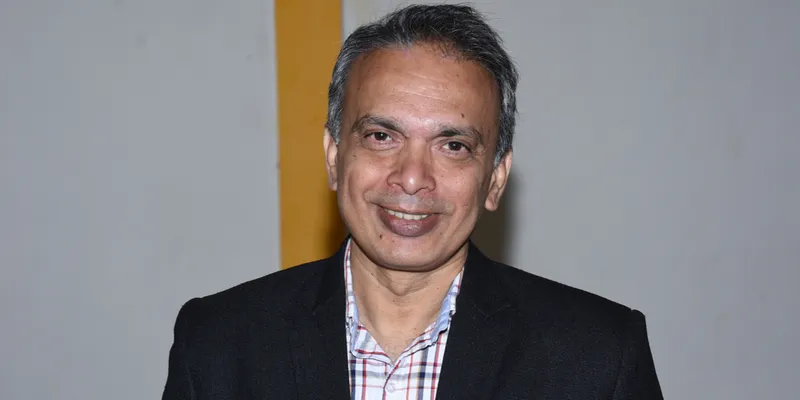Meet the man who is on a mission to save Bengaluru's Bannerghatta National Park
Harish Kumar has been striving to protect the Bannerghatta National Park with the help of Namma Bengaluru Foundation.
Ever since the Karnataka state government issued a draft notification to trim down the Eco-Sensitive Zone (ESZ) around Bannerghatta National Park (BNP) in Bengaluru, activists, NGOs, and environmentalists have been raising strong objections.
On November 5, 2018, a new draft notification declared that the ESZ will be reduced to 168.84 sq km, whereas in 2016, the draft notification declared that the zone was spread across 268.96 sq km.
Harish Kumar, General Manager, Namma Bengaluru Foundation (NBF), is one among the many to raise concerns over the proposal and has been a prominent voice in this discourse.
Having studied agriculture from University of Agricultural Sciences, Bengaluru, Harish has witnessed poverty at close quarters, which drove him to work in the social sector after working in the corporate sector for many years.

Harish Kumar, General Manager, Namma Bengaluru Foundation
On his choice to work with Namma Bengaluru Foundation, Harish says,
“The strategic approach of NBF when it came to advocacy, partnership, and activism, as well as its healthy and practical way of functioning, led me to work as part of it.”
Namma Bengaluru Foundation is an organisation that aims to represent the voice of the residents of Bengaluru. They encourage the public to act responsibly and work collectively for the betterment and welfare of the city. NBF has been conducting numerous campaigns, and has filed RTIs and PILs to address various issues.
“These days private greed seems to be winning over public good. Unfortunately, the former is influencing the government to a large extent,” says Harish, expressing his exasperation over the recent notification.
While vocalising their opposition to the proposal, NBF also filed an RTI on behalf of the public to the Deputy Conservator of Forests. The reply disclosed that both the safe zone and the buffer zone were marked for many mining projects.
Kebbehalli and Thammanayakanahalli, two villages situated on the outskirts of Bengaluru and known for having granite reserves, have had stone mining operations that have resulted in a shrinkage of 14.63 sq. km of ESZ. Quarries have been granted an exemption to ESZ regulations in this case.

Stone quarries, ESZ, Bannerghatta National Park
“ESZ is the protective layer of BNP, which will get fragmented and disintegrated. The reduction of ESZ has direct negative consequences on the health and happiness of people of Bengaluru. We already have asthma in 25 percent of children in Bengaluru, which is likely to go up with an increase in air pollution,” Harish says.
On February 24, 2020, NBF held a press conference as a part of its United Bengaluru campaign to push for a citizen’s movement against the state government’s proposal. This conference enabled a meeting of 200 people, most of whom were farmers and activists.

A press conference held by Namma Bengaluru Foundation in February 2020.
In supplementary effort, Vijay Nishanth, creator of Project Vruksha, an eco-initiative that aims to quantify biodiversity, launched a public petition that has gained more than 25,000 signatures, indicating that this truly is an issue that worries the citizens of Bengaluru.
Owing to its remarkable diversity of flora and fauna, Bannerghatta National Park acts as the lungs of the city. The park is home to a unique variety of species of mammals, reptiles and birds, and the ESZ protects its diverse ecosystem.
“BNP needs a larger ESZ. Creating hard edges by building across the park's periphery will limit the animal movement within and between their habitat, leading to likely human-wildlife conflict. Also, increased urban footprint could negatively impact local animal populations in a number of ways,” opines Siddhant Nowlakha, ofthe Centre for Climate Change and Sustainability, Azim Premji University.
Harish suggests that solution-oriented consultations must happen at the grassroots level, starting with the gram panchayats and wards.
The Bannerghatta forest has noticeably been shrinking, and to take action, Harish recommends the strategic use of formal representations to the government, informing and educating people about the issue, notifying the media, and organising peaceful marches.
He is confident that the government will pay heed to the people’s request, and firmly believes that “informed citizens and participants will strengthen democratic processes”.
“At times, key decision-makers are deliberately ill-informed by vested interests. When it is brought to their notice by various modes, like campaigns, they adopt course corrections,” he explains.
Namma Bengaluru Foundation is planning to work in key areas of planning and governance, from ward to city level, stressing on public involvement. The organisation plans to put in efforts right from the ground straight up to the policy level.
(Edited by Kanishk Singh)









